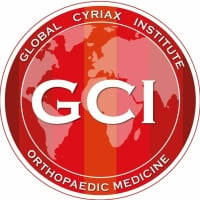
What are dural signs and symptoms?
Dural signs and symptoms, often forgotten, but obvious clinical elements
Dural signs and symptoms are very useful clinical diagnostic elements which you can detect in the history and the functional examination of the patient suffering from lumbar pain.
Reaching a good diagnosis is all about collecting relevant puzzle pieces
The relation between an internal derangement and dural signs and symptoms
A patient suffering from a lumbar internal derangement frequently shows dural signs in the functional examination. Those are pathognomic for a disco-dural conflict. In case of an acute lumbago (big posterocentral internal derangement) we certainly expect the presence of those clinical findings.
Why should you focus on irrelevant information obtained through useless tests and procedures? Always ask yourself: "What am I doing?" ; "Do I really do what I think I do?" ; "Is the procedure I do relevant?",... Sometimes we think we are so "specialized" but at the same time we seem to forget some basics...
The disease many "manual" therapists are suffering from is "artificial hypercomplication". There's no need to feel offended by this quote, but perhaps it is useful to critically analyze what we learned and what we do...
You would like to manage your basics and bring your clinical reasoning strategies to the next level? In that case you are the perfect candidate to join the unique Mastermind private training in orthopaedic medicine Cyriax.
Let's have a look at some basics now:
Dural signs
- The patient performs a flexion in standing and produces some back pain (central, unilateral or bilateral) or gluteal pain ; he stays in the flexed position and an accessory neck flexion makes this lumbar or gluteal pain worse or better
- Flexion in standing, end range, is negative and on accessory neck flexion, from the end range flexed position, lumbar or gluteal pain is produced
- A straight leg raise is e.g. end range painful and an accessory neck flexion increases or decreases the pain
- A crossed straight leg raise is also a nice example : the e.g. left SLR produces lumbar pain on the right side of the spine
Dural symptoms
- back pain, suprascapular, or gluteal pain on coughing or sneezing.
- In the thoracic spine pain (anterior and/or posterior) on taking a deep breath could be a dural symptom.
- Pain in the gluteal area on coughing could be a dural symptom too, but could also be the result of a sacro iliac arthritis.
- Pain in the leg on coughing could be the result of a primary posterolateral protrusion (rare kind of sciatica) or a neuroma.
Keep one important message in mind : one single positive test has no clinical meaning at all ; focus on the complete image : history, inspection and a cluster of positive and negative tests.
